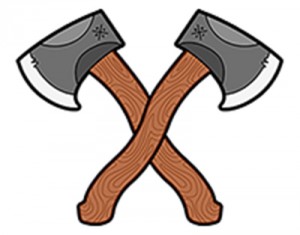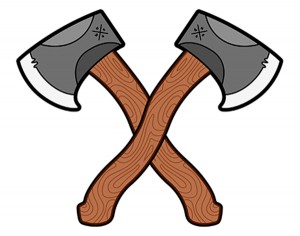We’re not a printing company that does websites or a website company that does printing.
We are a Graphic Design Agency that has been doing both website design and development and graphic design and printing, since our launch in 2003.
We have so much combined experience in both related industries that we can smoothly design for both mediums and fully understand the requirements and difficulties of both.
As an example, we would design a logo primarily for print - and then that logo can be converted for website use. The reason for this is that print requires a very high resolution (usually vector image - which retains it’s quality at any size), whereas web requires a much smaller resolution as it will be viewed on a screen. Print is a hard medium for quality control, and special care must be taken to have correctly sized, excellent quality images because it is very easy to spot a drop in quality and inconsistency on the printed page.
When you start with a small graphic and wish to re-size, especially an graphic that is low resolution, the process of re-sizing is not always the right one. When you re-size an graphic, all you will achieve is a stretching of the graphic. The resolution of an graphic is based on the number of pixels contained in the graphic, so when increasing the graphic size, this process will not create new pixels, it will only increase the size of the pixels in your existing graphic by stretching them. The best way to ensure your graphics for print are of excellent high quality is to ensure you have large graphics to start with. Graphics for print need to be around 300dpi (dots per inch), and compared to images for on-screen viewing these need to be only 72dpi.
How this translates into website design and graphic design for print, is that if you have your marketing material designed simply for the web - and you to translate your marketing medium into print, all your graphics will look blurry or blocky, giving a bad presentation of your business. At Activate Design we have a clear knowledge of these processes, and can work with you to design either for website-only, or for print-only, or with the foresight to design for both mediums, starting with higher-resolution graphics and logos at print specification, then creating smaller, optimised versions of these graphics and logos for use on your website or online newsletter mediums.
To help those in the know, here’s some information on the two main types of graphic images;
Bitmap Graphics  These are also known as raster images and are made up of pixels - tiny dots of individual colours that make up the image, like a photograph. It is hard to resize this image type without sacrificing image quality. When you downsize an image of this type you are essentially throwing away pixels. When you enlarge an image the software has to try to create new pixels, by estimating the colour values of the new pixels based on surrounding pixels. This process is known as ‘interpolation’, and is not an ideal process, often resulting in a blurry image. The best way to handle bitmap images is to start with the largest image possible and downside it for each required application.
These are also known as raster images and are made up of pixels - tiny dots of individual colours that make up the image, like a photograph. It is hard to resize this image type without sacrificing image quality. When you downsize an image of this type you are essentially throwing away pixels. When you enlarge an image the software has to try to create new pixels, by estimating the colour values of the new pixels based on surrounding pixels. This process is known as ‘interpolation’, and is not an ideal process, often resulting in a blurry image. The best way to handle bitmap images is to start with the largest image possible and downside it for each required application.
Main Characteristics of Raster Graphics;
- Pixels are in a grid format.
- The quality of a bitmap image depends on the resolution.
- Resizing for a large graphic reduces the quality.
Vector Graphics  These graphics are made up lines and curves, shapes with easily editable characteristics like outlines colours and fills. Fonts are the most well known vector graphics. They consist of single, easily scalable objects. A vector graphic can be modified without changing the quality, and is a very flexible format in the way you can use ‘controlling handles’ in design software to stretch out, move and change an object. This format is not suitable for photo-type images as they are made up of solid areas of colour.
These graphics are made up lines and curves, shapes with easily editable characteristics like outlines colours and fills. Fonts are the most well known vector graphics. They consist of single, easily scalable objects. A vector graphic can be modified without changing the quality, and is a very flexible format in the way you can use ‘controlling handles’ in design software to stretch out, move and change an object. This format is not suitable for photo-type images as they are made up of solid areas of colour.
Main Characteristics of Vector Graphics;
- Easily re-sizable.
- Clean lines.
- Resoution independent.
- Can easily be converted to bitmap.
We can design your logo, business image, stationary and convert this into an online medium. Visit the Graphic Design page at www.activatedesign.co.nz for more information on graphic design, and some introductory prices. View our Website Page for information on our cost effective CMS or eCommerce or websites.




